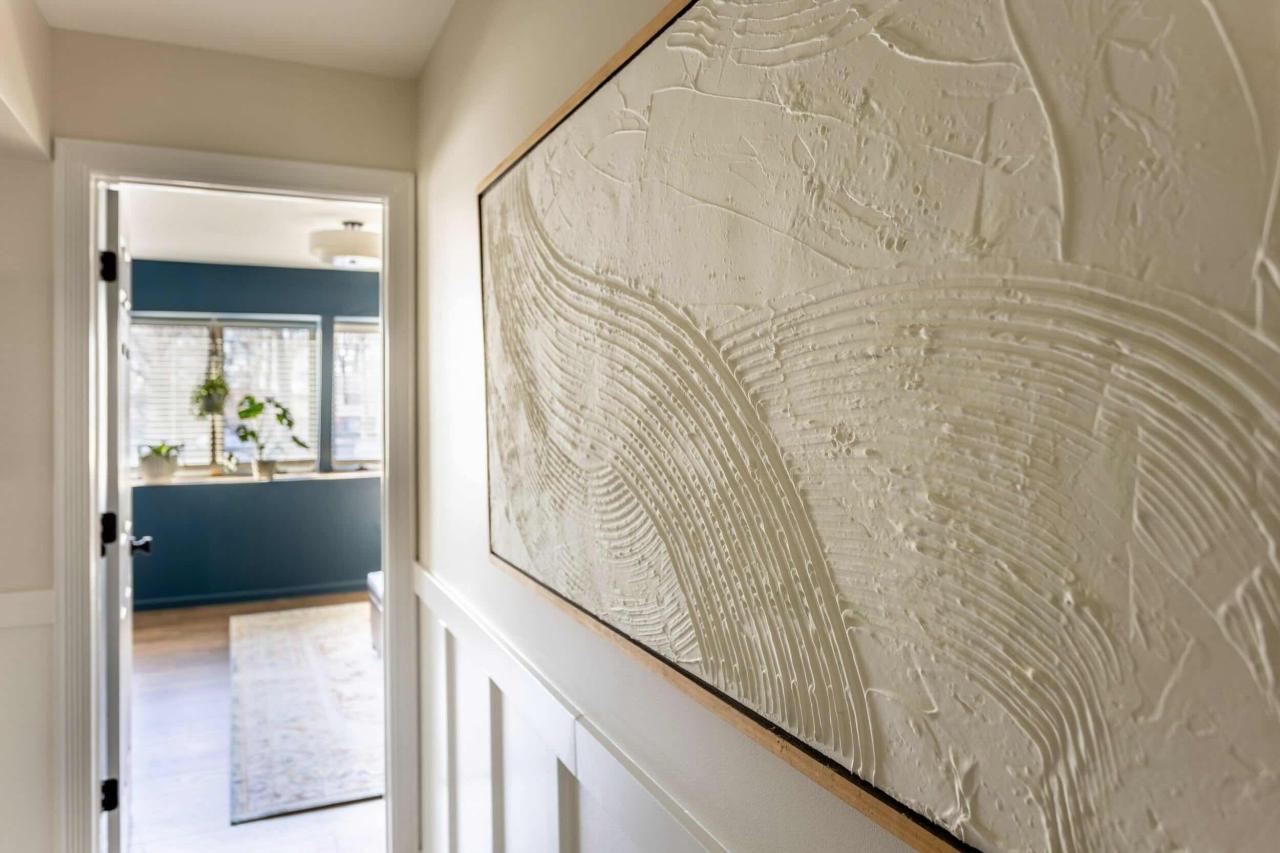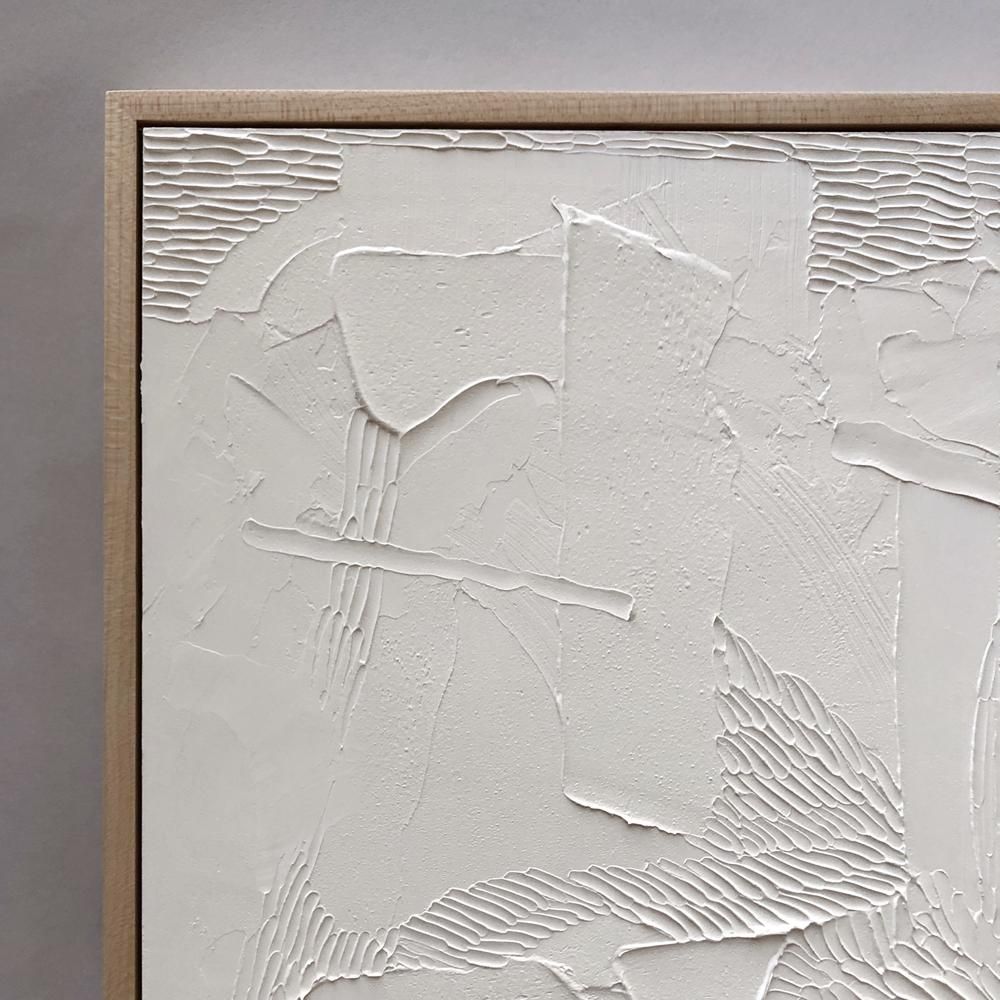DIY plaster art takes center stage, inviting you to explore a world of creative possibilities. This versatile material offers a unique medium for artistic expression, allowing you to transform simple ideas into tangible masterpieces. From intricate sculptures to decorative home accents, the possibilities are endless. This guide will delve into the fascinating world of plaster art, equipping you with the knowledge and techniques to create your own stunning works of art.
Plaster art has a rich history, dating back to ancient civilizations who utilized it for architectural embellishments and sculptures. Today, plaster remains a popular choice for artists and hobbyists alike, thanks to its affordability, versatility, and ease of use. Whether you’re a seasoned artist or a curious beginner, this comprehensive guide will provide you with the tools and inspiration to embark on your plaster art journey.
Introduction to DIY Plaster Art
Plaster art, a timeless art form, has been used for centuries to create beautiful and enduring sculptures, decorative elements, and even functional objects. From the ancient Egyptians who used plaster for wall decorations to the Renaissance masters who employed it for intricate sculptures, plaster has played a vital role in shaping the world’s artistic landscape.
The versatility and affordability of plaster make it an excellent choice for DIY projects, offering endless possibilities for artistic expression.
Types of Plaster for DIY Projects
Plaster comes in various types, each with its unique properties and suitability for different applications. Understanding these differences will help you choose the right type for your project.
- Plaster of Paris: This readily available plaster is known for its fast setting time, making it ideal for quick projects and creating detailed shapes. However, its quick drying time requires working quickly and efficiently.
- Dental Plaster: Often used in dental labs, dental plaster offers a smoother finish and a slightly longer setting time compared to plaster of Paris. It is a good choice for intricate details and delicate projects.
- Modeling Plaster: This type of plaster is designed for sculpting and modeling, providing a smooth and workable consistency. It has a longer setting time, allowing for more time to refine details and shapes.
- Hydrocal Plaster: Known for its strength and durability, hydrocal plaster is often used for casting and creating molds. It is a good option for projects requiring a strong and resilient final product.
Decorative Plaster Finishes

Plaster offers a wide array of decorative possibilities beyond its basic function as a wall covering. By incorporating various techniques and materials, you can create stunning visual effects that add character and sophistication to your space. This section explores some popular decorative plaster finishes, their application techniques, and the tools and materials needed to achieve them.
Venetian Plaster
Venetian plaster is a luxurious finish that mimics the look of polished marble. It is created by layering thin coats of plaster mixed with pigments and a binder, then smoothing and polishing the surface to achieve a lustrous sheen. The result is a smooth, elegant finish that adds a touch of opulence to any room.
Venetian plaster is applied in multiple thin layers, typically three to five. Each layer is allowed to dry slightly before applying the next, creating a subtle depth and variation in the finish. The final layer is then polished with a smooth trowel or a specialized polishing tool, achieving a high-gloss finish.
- Tools:
- Trowel
- Polishing tool
- Sponge
- Rags
- Materials:
- Venetian plaster mix
- Pigments
- Binder
Venetian plaster is often used to create faux marble effects, adding a touch of classic elegance to walls and ceilings.
Stucco
Stucco is a durable and versatile plaster finish that offers a textured, rustic look. It is made from a mixture of cement, sand, and water, and can be applied to walls, ceilings, and even exterior surfaces. Stucco is known for its ability to withstand harsh weather conditions, making it an excellent choice for outdoor projects.
Stucco is applied in thick layers, creating a rough, textured surface. The texture can be varied by using different tools and techniques. For example, a trowel can be used to create smooth, even surfaces, while a brush or sponge can be used to create more textured effects.
- Tools:
- Trowel
- Brush
- Sponge
- Materials:
- Stucco mix
- Water
Stucco is often used in Mediterranean-style homes, adding a rustic and traditional feel.
Textured Finishes
Textured plaster finishes offer a wide range of creative possibilities, allowing you to create unique and visually appealing surfaces. These finishes can be achieved by using a variety of tools and techniques, resulting in a variety of patterns and textures.
- Tools:
- Trowel
- Roller
- Sponge
- Brush
- Stamp
- Materials:
- Plaster mix
- Texture additives (e.g., sand, aggregates)
Some common textured plaster finishes include:
- Sgraffito: This technique involves applying layers of plaster in different colors and then scratching away the top layer to reveal the colors underneath, creating a decorative pattern.
- Sand Finish: This finish creates a rough, textured surface by incorporating sand into the plaster mix.
- Sponge Finish: This finish creates a unique, irregular pattern by applying the plaster with a sponge.
- Brush Finish: This finish creates a textured surface by applying the plaster with a brush.
Textured plaster finishes can add visual interest and dimension to any space.
Advanced Plaster Art Techniques: Diy Plaster Art
Once you’ve mastered the basics of plaster art, you can explore more complex and intricate techniques. This section will delve into the world of advanced plaster art, focusing on techniques like plaster mosaics, mixed media projects, and incorporating other materials.
Plaster Mosaics
Plaster mosaics offer a unique way to create textured and visually captivating artwork. They involve carefully arranging small pieces of plaster, often in various shapes, colors, and textures, to form a cohesive design.
- Creating a Plaster Mosaic: The process begins by creating a base layer of plaster on a sturdy surface like plywood or canvas. Once the base layer dries, you can start arranging small pieces of plaster, which can be pre-shaped or broken into irregular pieces. These pieces are then adhered to the base layer using a strong adhesive. Once the mosaic is complete, you can apply grout or sealant to protect and enhance the artwork.
- Materials for Plaster Mosaics: Materials used in plaster mosaics include:
- Plaster of Paris or other plaster types
- Adhesive, such as plaster bonding agent or a strong adhesive specifically designed for mosaics
- Grout or sealant for protection and aesthetics
- Tools for cutting, shaping, and arranging plaster pieces
- Example: Imagine a mosaic depicting a sunset, with varying shades of orange, red, and purple plaster pieces arranged to create a gradient effect. The mosaic could be further enhanced with small pieces of glass or metallic accents to add shimmer and depth.
Plaster in Mixed Media Projects
Plaster’s versatility extends beyond traditional sculpture and mold-making. It can be effectively incorporated into mixed media projects, blending seamlessly with other materials like wood, metal, fabric, and even found objects.
- Integrating Plaster: The integration of plaster in mixed media projects can involve various techniques. Plaster can be used to create textured surfaces, mold shapes around existing objects, or act as a base for layering other materials. For instance, you can create a sculpture with a plaster base and then embellish it with fabric, beads, or metal accents.
- Example: Consider a mixed media project where plaster forms the base of a sculpture, creating a rough and textured surface. Then, you could incorporate wood elements for structural support and texture contrast. You could further enhance the sculpture by layering fabric, adding metallic details, or incorporating found objects for a unique and personal touch.
Incorporating Other Materials
Plaster art doesn’t have to be limited to just plaster. It can be combined with various materials to create stunning and unique pieces.
- Common Materials: Some common materials that can be incorporated with plaster include:
- Glass: Adding small pieces of colored glass to plaster can create beautiful and shimmering effects.
- Metal: Metal accents, such as wire, sheet metal, or found metal objects, can add structural support, visual interest, and a unique touch to plaster sculptures.
- Wood: Wood can be combined with plaster for both structural support and aesthetic contrast. Wood can also be used to create unique textures and patterns within a plaster sculpture.
- Fabric: Fabric can be layered onto plaster to create soft and flowing textures.
- Example: A plaster sculpture incorporating pieces of broken glass could resemble a shattered window, reflecting light and creating a mesmerizing visual effect. Alternatively, you could use metal wire to create intricate patterns within a plaster sculpture, adding a sense of delicate balance and structure.
Plaster Art for Home Decor

Plaster art offers a versatile and affordable way to enhance your home decor, adding unique texture and personality to any space. From creating stunning wall art to crafting decorative sculptures, plaster provides endless creative possibilities for transforming your home.
Creating Decorative Wall Art, Diy plaster art
Plaster wall art provides a unique and textured way to enhance your home’s aesthetic appeal. You can create various designs, from abstract patterns to intricate landscapes.
- Relief Wall Art: This technique involves applying plaster to a surface, creating raised designs. You can use stencils, molds, or freehand techniques to create various shapes and textures. For instance, you can create a geometric pattern by pressing a stencil into the wet plaster, leaving behind a raised design.
- Textured Wall Panels: Create unique wall panels by applying plaster in different textures and patterns. You can use tools like spatulas, brushes, or even your fingers to achieve different effects. For example, you can create a rustic look by applying plaster with a rough texture, or a smooth, modern look by using a trowel to create a polished surface.
- Plaster Wall Murals: Plaster murals allow you to create large-scale artwork on your walls. You can use stencils, brushes, or even your hands to paint intricate designs onto the plaster surface. For example, you can create a realistic landscape mural or a stylized geometric design.
Sculpting with Plaster
Plaster is an ideal material for creating decorative sculptures for your home. You can craft various shapes and sizes, from small figurines to larger statement pieces.
- Plaster Figurines: You can use molds to create detailed figurines, such as animals, plants, or abstract shapes. You can paint the figurines after they dry to add color and detail. For example, you can create a series of animal figurines to decorate your bookshelf or mantelpiece.
- Plaster Vases: Plaster vases provide a unique and elegant way to display flowers or greenery. You can use molds or create your own designs by shaping the plaster with your hands. For example, you can create a vase with a textured surface or a geometric shape.
- Plaster Wall Sconces: Plaster sconces offer a unique and decorative way to add lighting to your home. You can create simple or intricate designs, incorporating elements like candles, LED lights, or even dried flowers. For example, you can create a rustic-style sconce by incorporating natural elements like branches or twigs into the plaster design.
Incorporating Plaster Art into Different Interior Design Styles
Plaster art complements various interior design styles, offering a way to personalize your space and create a cohesive look.
- Modern Minimalist: Use plaster to create sleek and geometric wall art or sculptures. Opt for clean lines, simple shapes, and neutral colors. For example, a large, abstract plaster wall sculpture in white or gray can complement a minimalist living room.
- Rustic Farmhouse: Incorporate plaster art with natural textures and earthy tones. Use techniques like relief carving or textured plaster to create a rustic feel. For example, a plaster wall panel with a woodgrain texture can enhance a farmhouse-style kitchen.
- Bohemian Chic: Embrace vibrant colors and intricate patterns with plaster art. Create wall murals with bohemian motifs or sculpt decorative objects with bold colors and textures. For example, a plaster wall mural featuring a floral pattern can add a bohemian touch to a bedroom.
Final Thoughts
As you venture into the world of DIY plaster art, remember that the key lies in embracing experimentation and allowing your creativity to flow. From simple molds to intricate sculptures, the possibilities are endless. With practice, patience, and a touch of imagination, you can transform ordinary plaster into extraordinary works of art that reflect your unique vision. So, gather your tools, unleash your creativity, and let the magic of plaster art take shape.
DIY plaster art offers a unique way to express creativity, allowing you to sculpt intricate designs and textures. If you’re looking for a complementary skill, check out woodshop projects to create beautiful frames or stands for your plaster creations.
The combination of these two crafts opens up endless possibilities for stunning, personalized home decor.




